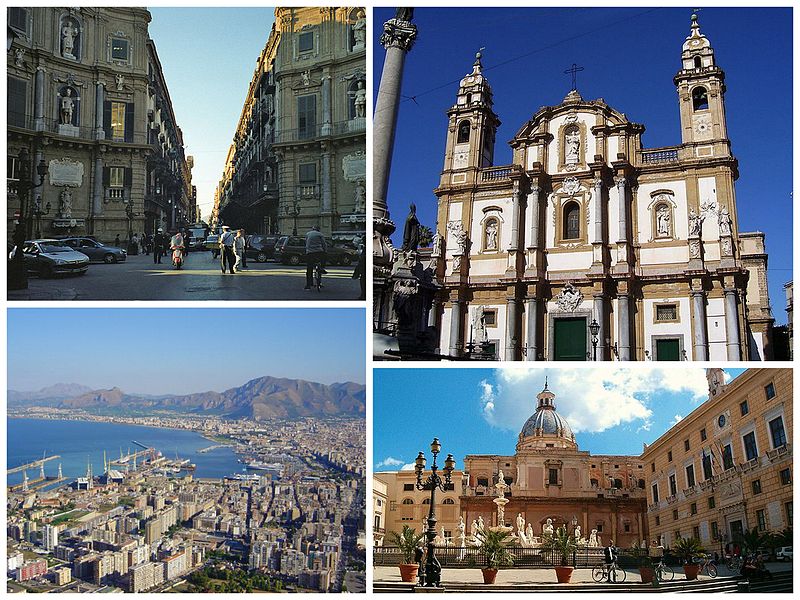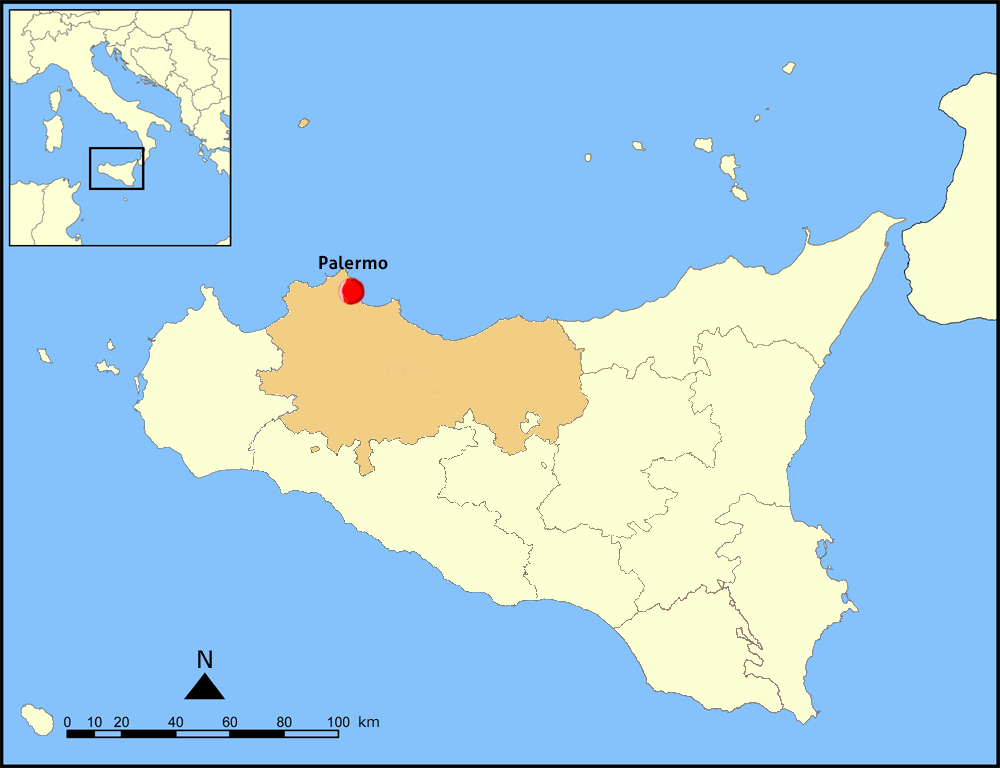The population of Palermo urban area is estimated by Eurostat to be 855,285, while its metropolitan area is the fifth most populated in Italy with around 1.2 million people. In the central area, the city has a population of around 650,000 people. The inhabitants are known as Palermitans or, poetically, panormiti. The languages spoken by its inhabitants are the Italian language and the Sicilian language, in its Palermitan variation.
Palermo is Sicily’s cultural, economic and touristic capital. It is a city rich in history, culture, art, music and food. Numerous tourists are attracted to the city for its good Mediterranean weather, its renowned gastronomy and restaurants, its Romanesque, Gothic and Baroque churches, palaces and buildings, and its nightlife and music. Palermo is the main Sicilian industrial and commercial center: the main industrial sectors include tourism, services, commerce and agriculture. Palermo currently has an international airport, and a significant underground economy.[citation needed] In fact, for cultural, artistic and economic reasons, Palermo was one of the largest cities in the Mediterranean and is now among the top tourist destinations in both Italy and Europe. The city is also going through careful redevelopment, preparing to become one of the major cities of the Euro-Mediterranean area.
Roman Catholicism is highly important in Palermitan culture. The patron saint of the city is Saint Rosalia. Her feast day on July 15 is perhaps the biggest social event in the city. The area attracts significant numbers of tourists each year and is widely known for its colourful fruit, vegetable and fish market at the heart of Palermo, known as the Vucciria.

Clockwise from top: Quattro Canti in Maqueda Street, San Domenico Church, Pretoria Square and Santa Caterina Church, and view of downtown Palermo from Mount Pellegrino

Map of Palermo
